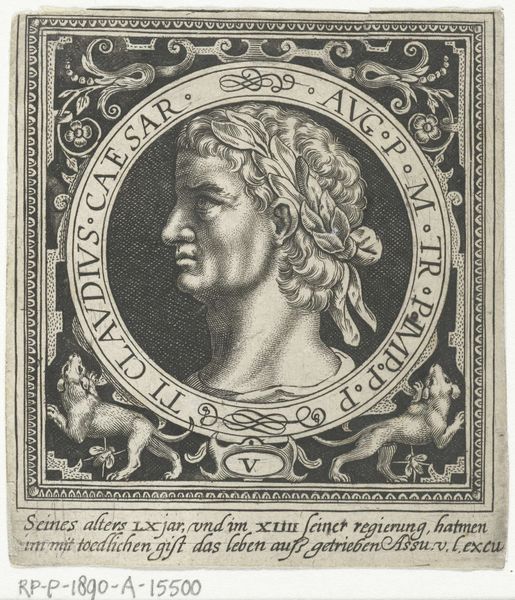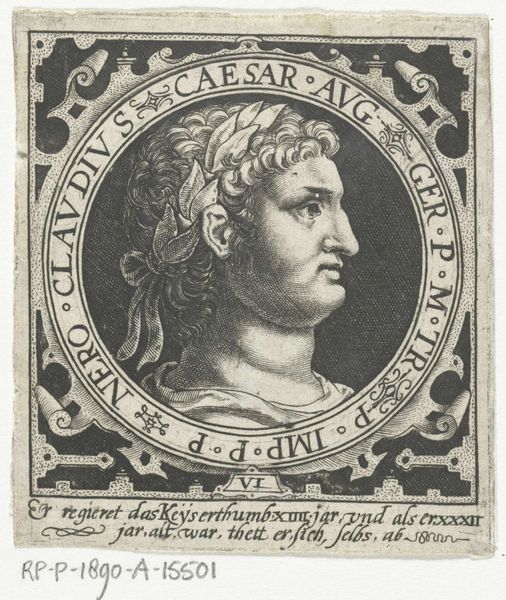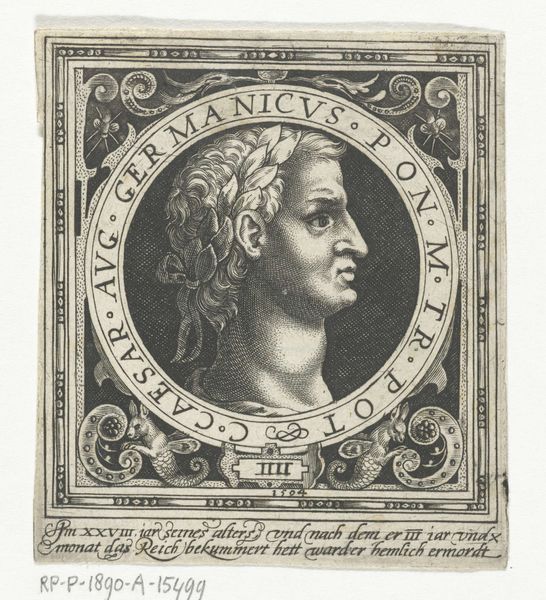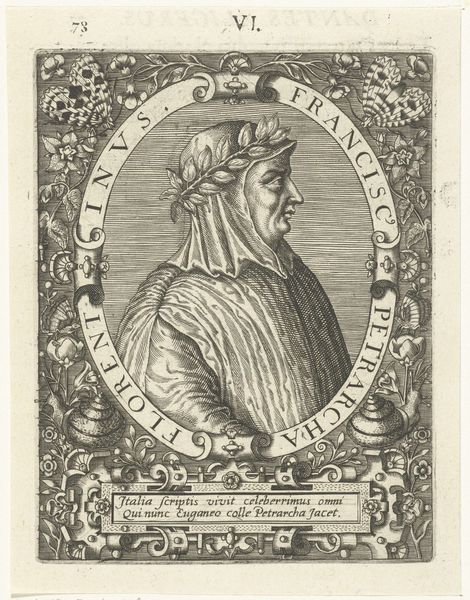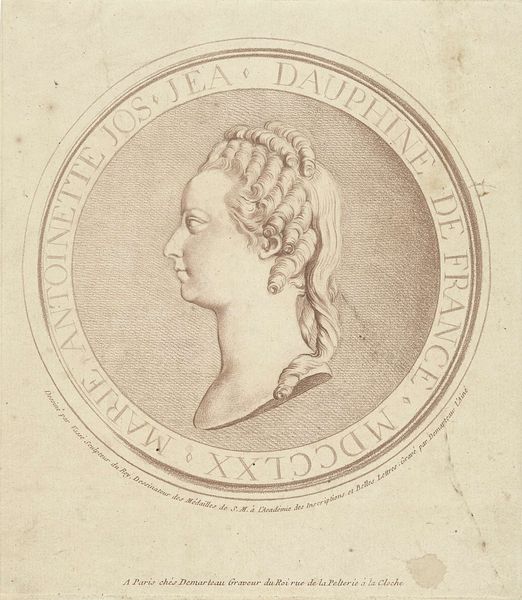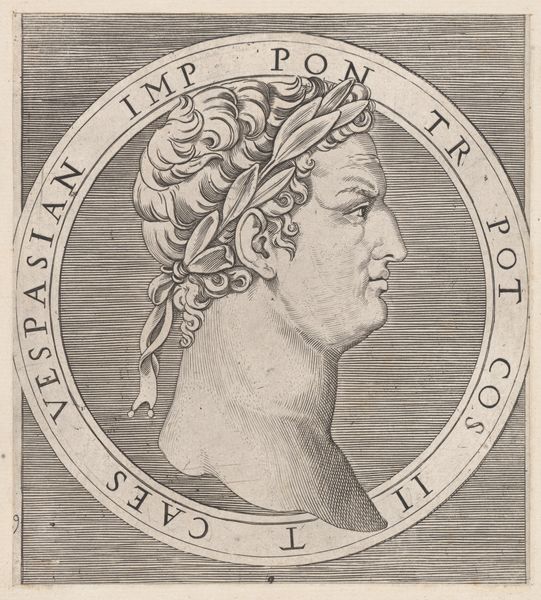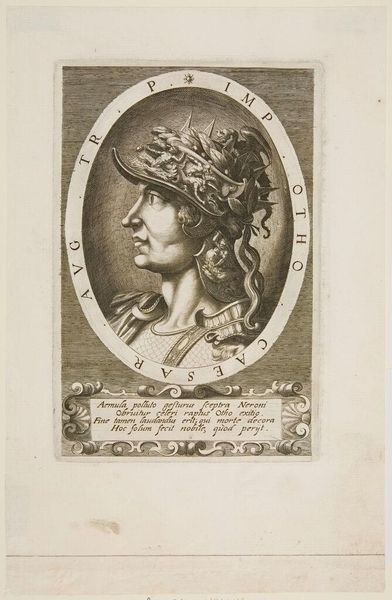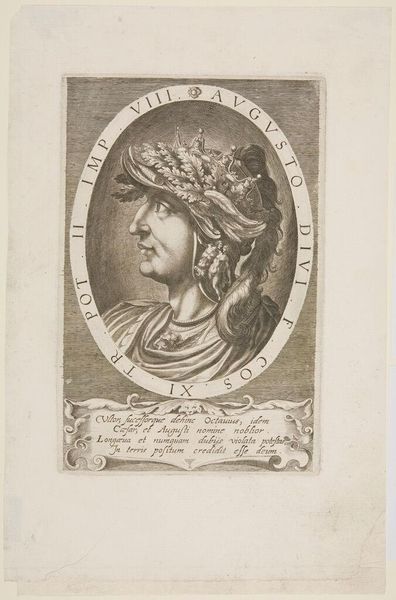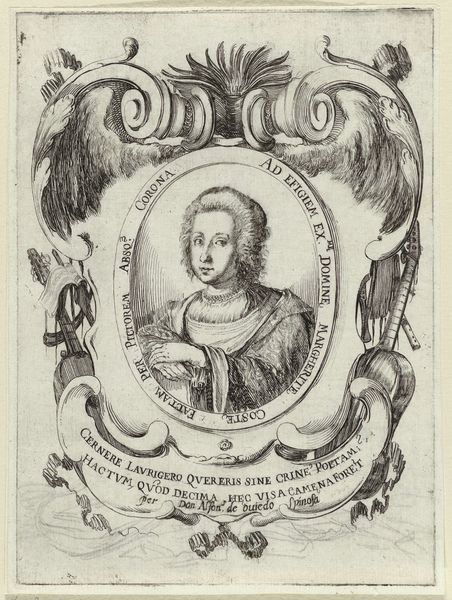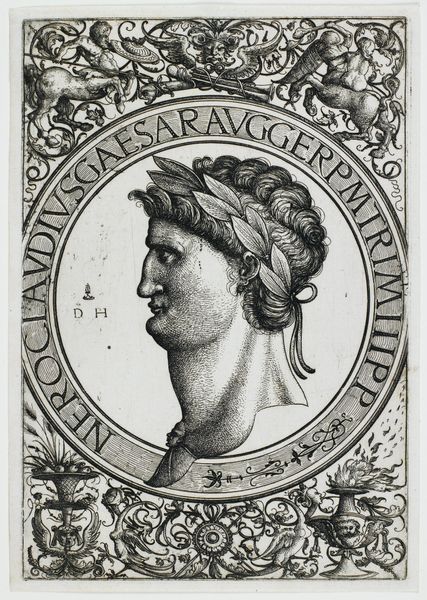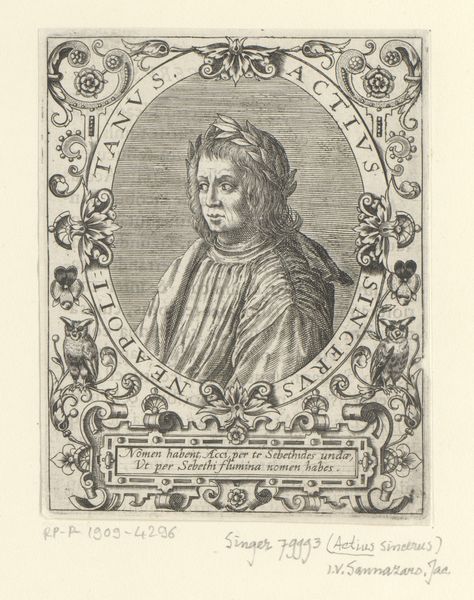
graphic-art, engraving
#
portrait
#
graphic-art
#
caricature
#
11_renaissance
#
history-painting
#
engraving
Dimensions: height 67 mm, width 62 mm
Copyright: Rijks Museum: Open Domain
Editor: This is Nicolaes de Bruyn's "Portret van Vespasianus op medaillon," from 1594. It’s an engraving, and something about the profile feels so…stiff, almost like a coin. What’s your read on it? Curator: This engraving presents Vespasian, Roman emperor, not just as a ruler but as a symbol. Notice how the laurel wreath, a visual echo of classical authority, subtly shifts its meaning across time. It references triumph, sure, but in 1594, what else might it signify? Editor: Power, maybe? That he’s an important historical figure? Curator: Precisely! The medallion format itself evokes antiquity, embedding Vespasian within a lineage of power. Think about it: how does this portrait tap into cultural memory, linking the Renaissance viewer to the Roman Empire? Does the artist perhaps highlight not just the emperor, but an ideal of leadership for his time? Editor: I guess the artist isn't just copying a Roman coin, but building on that symbolism for a 16th-century audience. So it’s less about Vespasian as a man, and more Vespasian as an idea. Curator: Exactly! The inscription and its placement are crucial, too. Even its density gives a monumental feel that reminds us this image aimed to endure, conveying specific virtues of Roman authority that echoed across centuries. How powerful that symbols transcend their original contexts! Editor: That's amazing, it is like a historical conversation that this portrait embodies between then and now. Thanks for unpacking all of those layers for me! Curator: My pleasure, thinking of images as encoded messages, across the ages, helps us unlock their deeper meaning.
Comments
No comments
Be the first to comment and join the conversation on the ultimate creative platform.
